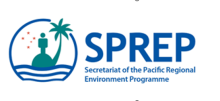Locally managed marine areas (LMMAs) are often recommended as a strategy to achieve conservation and fisheries management, though few studies have evaluated their performance against these objectives. We assessed the effectiveness of eight periodically harvested closures (PHCs), the most common form of management within Fijian LMMAs, focusing on two outcomes: protection of resource units and biodiversity conservation. Of the eight PHCs, only one provided biodiversity benefits, whereas three were moderately successful in protecting resource units (targeted fish biomass). Protection of resource units was more likely when PHCs were harvested less frequently, less recently, and when total fish biomass in open areas was lower. Our findings further suggest that monitoring, enforcement, and clearly defined boundaries are critical, less frequent harvesting regimes are advised, and culturally appropriate management incentives are needed. Although PHCs have some potential to protect resource units, they are not recommended as a single strategy for broad-scale biodiversity conservation.For more information on this publication or to request a copy, please contact Sangeeta Mangubhai, Director , Fiji Country Program, WCS ([email protected])









